
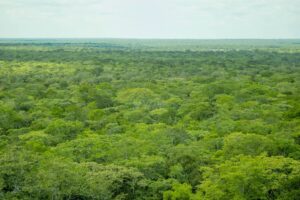
* The Park — through Department of National Parks and Wildlife (DNPW) with support from International Fund for Animal Welfare (IFAW) — was in 2022 repopulated with 263 elephants
* But part of perimeter boundary wasn’t fenced — allowing the animals to stray into human communities where they killed people and destroyed their crops
* Thus courting controversy on the international media over the human-animal conflict — a matter that faced legal action in UK
By Wanangwa Tembo, MANA & Duncan Mlanjira, Maravi Express
Kasungu National Park is now fully fenced from animals, especially elephants, from leaving their sanctuary following the completion of 133-kilometre perimeter fence constructed on the entire eastern stretch of Park — a project that has been touted as putting to rest the human-animal conflict in the area.

Advertisement
The Park — through Department of National Parks and Wildlife (DNPW) with support from International Fund for Animal Welfare (IFAW) — was in 2022 repopulated with 263 elephants but part of perimeter boundary wasn’t fenced; allowing the animals to stray into human communities where they killed people and destroyed their crops — thus courting controversy on the international media over the human-animal conflict,
A stakeholder, Michael Labuschagne, who was involved in the translocation of the elephants from Kasungu National Park took the matter to court in London against IFAW and the governments of Malawi and Zambia to task for not observing the all-important requirement of fencing the animals from straying into human communities.
Minister of Tourism Vera Kamtukule commissioned the completion of the fence yesterday with a statement that the fence will help the 20,000 communities living close to the park to thrive together with animals without clashes.

Minister Kamtukule commissioning the solar powered electric fence
“We were having a challenge of human-wildlife conflict where animals were coming out of the park, destroying lives, crops and property, but now that is a thing of the past,” Kamtukule said. “And again, when the animals were just straying out of the park, they were being killed by poachers and community members, but now, people, their property and animals are safe.”
She also stressed the importance of collaboration between park authorities and community members in the park conservation activities in reducing cases of communities damaging the fence and invading the protected area for livelihood.
“I am a prime believer of the fact that the community is our first line of defence as far as conservation is concerned,” she said. “What that means is that there must be something that the communities are benefiting from by living close to the park.
“Otherwise, they will attack the park, cut down trees for firewood or sell, kill the animals or be used by poachers; so, it is incumbent upon those that are managing the park to ensure that they are providing alternative livelihood activities to support the communities.”
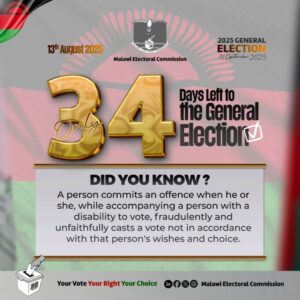
The DNPW has constructed the K2.8 billion solar-powered fence with technical and financial assistance from the IFAW, who also funded the translocation of the pachyderms.
The fence covers at least nine traditional authorities and IFAW country director for Malawi and Zambia landscape connectivity, Patricio Ndadzela described the barricade as an effective tool to deal with human-animal conflict.
“People and animals must live together, and for this to happen, we must mitigate human-wildlife conflicts,” he said. “This fence will go a long way in protecting people’s lives, crops, and providing enough security for animals.
“It is momentous for us to support the government of Malawi in wildlife conservation,” said Ndadzela, whose organisation also invested three Toyota Land Cruisers vehicles worth K473 million and 11 motorcycles valued at K66 million towards to ease DNPW’s mobility challenges faced in managing the park.
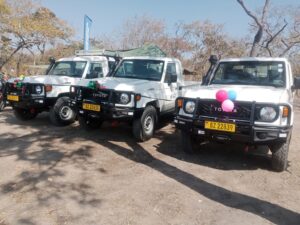
Speaking on behalf of communities surrounding the park, Senior Chief Lukwa expressed gratitude to IFAW and urged the community to take care of the fence.
In March this year, UK’s publications, Daily Maverick and The Guardian reported that faced a group action suit seeking compensation for Zambians and Malawians who have had family members killed and suffered crop and property damage from elephant incursions in the wake of an ill-conceived translocation of 263 of the pachyderms to Kasungu National Park in 2022; lawsuit-filed-against-ifaw-seeking-compensation-for-victims-of-elephant-translocation-from-liwonde-to-kasungu-national-parks/.
“Spearheaded by UK human rights-focused law firm Leigh Day, it is the first time an animal welfare NGO has faced a group action suit, the British equivalent of a class action, which does not face as many procedural hurdles,” reported the Daily Maverick in March.
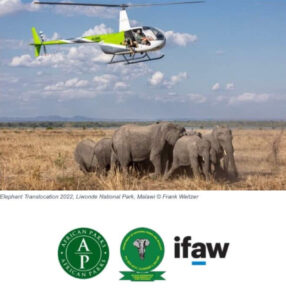
“As we have reported previously, the landscape around Kasungu has been transformed into one of fear and loathing for some of the world’s poorest people.
“Small-scale farmers have faced the almost daily terror of elephant attacks since the pachyderms were moved from Liwonde National Park in southern Malawi to Kasungu, despite the glaring fact that there is no fence on the international frontier with Zambia and along much of the Malawian side,” said the report.
However, IFAW defended themselves by disclosing that the interested stakeholder was Labuschagne — a disgruntled former employee of IFAW, who had been involved in the translocation but was later fired; fired-employee-labuschagne-behind-the-smear-campaign-of-ifaws-partnership-in-malawi-over-translocation-of-elephants-to-kasungu-national-park/.
But indeed the translocation of the elephants should have been done after the whole park had been completely fenced as consideration to do so was moved less than a month after the exercise — as another major investment from IFAW to repair and extend a 50km stretch of the park’s boundary fence, as according to a statement which Maravi Express published in August 2022.
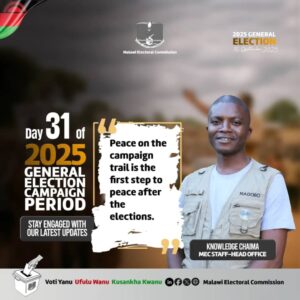
IFAW said they had already constructed 40kms of fencing, and Ndadzela was quoted in the statement as saying: “This is another significant investment by IFAW in Kasungu and a further example of our commitment to ensure wildlife remains safe from poachers and at the same time protect communities living outside the park from wandering animals.
“The rehabilitation work will be done in phases, with a total of 20kms expected to be repaired during the current fiscal year,” he had said.
The announcement of the investment was made at the graduation parade of 18 fence attendants, including three women, who had been trained and hired by IFAW and DNPW to patrol and maintain the solar-powered electric fence.
The Park’s elephant population increased from 40 in 2014 to 384 in 2022 due to the the translocation — which include other wildlife such as impala, buffalo, warthogs, sable and waterbuck, that was set to significantly improves Kasungu’s tourism potential, with the added benefit of providing jobs to surrounding communities.


But during the translocation that took place between June 27-July 29, two people got killed in Kasungu after been attacked by two bull elephants, which had escaped from the national park.
The incident happened after the bulls strayed out of their protected area where one went as far as Chisemphere community in the district and the other at a community named Mkanda in neighbouring district of Mchinji and upon confronting human beings, the bulls became aggressive and killed the people and injured another.
In an interview then, Kumchedwa said both bulls were euthanized (put to death humanely) because it was difficult to have them captured and brought back into the Park adding that two elephants might have been attempting to trace their route back to their original habitat — Liwonde National Park.
Kumchedwa was quick to say the sorrounding communities are always engaged to be on high alert of stray animals, saying when conflict incidents of this nature between wildlife and humans take place, the majority of cases is a result of people getting too close to witness the animals and as they usually mob the animal, it becomes aggressive.
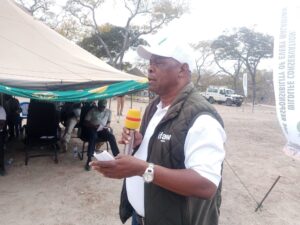
Kumchedwa
IFAW, through its Combating Wildlife Crime project, has been active in Kasungu National Park since 2017 — virtually halting poaching of wildlife, upgrading infrastructure and supporting livelihood projects for surrounding communities.
The wildlife were translocated approximately 350kms via road from Liwonde, managed by African Parks, to Kasungu, which is managed by the Wildlife Department and supported by IFAW and after the successful exercise, African Parks emphasised that the addition of elephants to Kasungu will assist towards economic gains through local employment from community members as well as fuel a conservation-led economy.
The DNPW partnered with African Parks for the management of Liwonde since 2015 and the following year, the park undertook one of the largest elephant translocations in history in 2016 and 2017, which saw the relocation of 520 elephants.
Of these, 366 were moved from Liwonde to alleviate pressure on habitat, reduce conflict and repopulate Nkhotakota Wildlife Reserve, also managed by African Parks.



Advertisement
Kasungu is the second largest national park in Malawi covering 2,100 square kilometres, which is four times the size of Liwonde and in partnership with the IFAW, the DNPW has been working in Kasungu since 2015 addressing law enforcement, wildlife crime, infrastructure and capacity building within the park.
IFAW — a global non-profit helping animals and people thrive together, working across seas, oceans and in more than 40 countries around the world — supports the DNPW in law enforcement, community engagement and fencing, amongst other activities.
It rescues, rehabilitates and releases animals as well as restoring and protecting their natural habitats. To solve the urgent and complicated problems it faces, IFAW matches fresh thinking with bold action by, amongst others, partnering with local communities, governments, NGOs and corporate businesses.

